Engaged Anthropology Grant: Keitlyn Alcantara
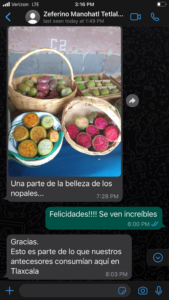
In 2017 Keitlyn Alcantara received a Dissertation Fieldwork Grant to aid research on, “The Diet of Sovereignty: Bioarchaeology in Tlaxcallan”. In 2019 Dr. Alcantara was able to build upon her Dissertation Fieldwork Grant when she received an Engaged Anthropology Grant to aid engaged activities on, “Food and Resistance in Ancient and Contemporary Tlaxcala”.
I began this project with the goal of reclaiming an understanding of ancient foodways and relationship to land in Mexico. Growing up, I would catch glimpses of this world through the crinkled brown hands of old ladies offering wild herbs from their baskets at the weekly tianguis, or the aroma of esquites seasoned with epazote wafting from the street corner. Food was a portal through time.
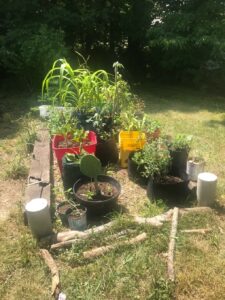
I started as a bioarchaeologist studying burials from the site of Tepeticpac, Tlaxcala, curious about the role of foodways in building community sovereignty, particularly as a tactic to resist the encroaching Aztec Empire. Around 1280 AD, Nahua migrants settled in the hilltop city of Tepeticpac, which sits above the contemporary urban sprawl of Tlaxcala city. The site was a crossroads for trade routes that connected the Gulf to the Basin of Mexico and the Aztec Empire. For years, the market of Ocotelulco, Tlaxcala was known as one of the largest of ancient Central Mexico – until the Aztec expansion sought to punish Tlaxcalteca defiance by cutting off access to trade routes. Yet the Tlaxcalteca continued resisting.
Combining dietary isotope analysis and ethnographic interviews with local producers and traditional chefs, I was able to show the Tlaxcalteca’s shrewd reliance on the abundance of the local landscape was key to their resistance. Shadowing growers on hillside hunts for maguey worms, I collected plant samples to recreate ancient foodwebs, while experiencing a whole new way of being in the world. I’d never really thought very deeply about the experience of living from, with, and alongside the landscape. Yet, this is exactly what the Tlaxcalteca did. Multigenerational knowledge cultivated the ability to recognize sustenance not only from acres of terraced fields, milpa thick with beans, corn, squash, but also the wild quintoniles that grew along paths. Cacti like nopal and maguey served as both fence and food, edible fleshy leaves housing protein-filled insects within.
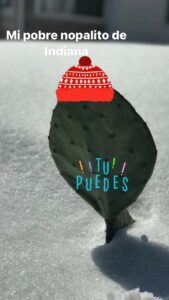
In the summer of 2020, I had planned to return to Tlaxcala, Mexico to co-host a cultural fair and community colloquium with my community partners as part of the Wenner Gren Engaged Anthropology grant. But, as I wrapped up my dissertation in the spring, the world shifted amidst growing panic about the pandemic. Instead of returning to a celebration, I sat isolated in lockdown, while endless hours of worry spread out ahead of me.
During this time, I remember the persistent *ding* of a Whatsapp message from Zeferino, the nopal farmer, who would share images of the latest brilliant magenta cacti blooms, or rainbow array of tunas (cactus fruits) (Fig.1-3). I sent back photos of my extensive pandemic-garden, cultivated from the abundant time I now had to slow down, be at home, and find new rhythms. In addition to photos, Zeferino would invite me to talks he was a part of on Facebook Live – conversations I’d had to miss before distance was made null by a world reshaped online. Later, concineras Dalia and Nicolasa were featured on an Instagram Live series hosted by our mutual friend Chef Irad Santacruz (@irad_santacruz), centering the work of cocineras tradicionales. My homesickness for Mexico was slowly quelled.
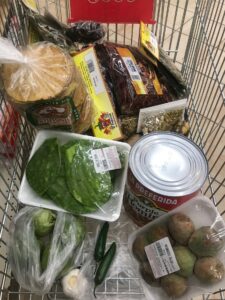
In our original community colloquium, we had planned to have each person share from their unique skillset; inspired by their active presence on social media, I reached out to plan a series on Instagram Live to take place in February 2021, the coldest, loneliest month in my current home of Indiana. The series was divided into four episodes (Atole with Maguey Nectar with Doña Adriana; Mole de Fiesta with Nicolasa and Dalia; Grilled Nopal with Zeferino; Prehispanic Art with Felipe. These episodes can be found here). Cooking and creating together, this series pushed me to re-think how we create community across space and time, with food as catalyst (Fig. 4-10). People from the Latinx diaspora across the US and Latin America joined each episode, chiming in with comments in the chat, filling my inbox with stories about their own food histories.
Unscripted, sometimes with poor reception, and more than one occasion of technical difficulties, the conversations we had while we cooked together stayed in my mind, echoing especially loudly as I watched the food and social systems around us shift and adapt to COVID-era supply chains and labor shortages.
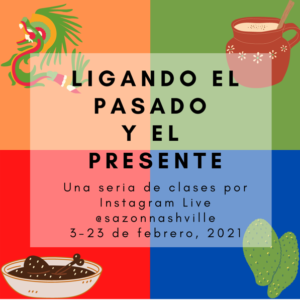
From Indiana, I spliced together pieces of the Instagram Live events with follow-up phone interviews. Film-maker and Tlaxcala local, Yolin Corje, filmed footage to accompany the audio.
By summer 2021, we had all been vaccinated and I returned to Mexico to join in the filming of some final scenes and share a draft of the documentary with my collaborators. We met in a coffee shop across the street from the green-tarped stands of the Alternative Agroecological Market of Tlaxcala (Fig. 11 &12). Six bodies hunched around my laptop, straining to thear the full-blast volume that fell just short. As the final credits rolled, they giddily complemented one another – even living in the same city, it was rare to see one another’s work in such an intimate way. The images of the campo sparked memories, and for the next hour I took a backseat to listen as they shared stories about how things used to be, how changing climate was shifting the patterns of the natural world.
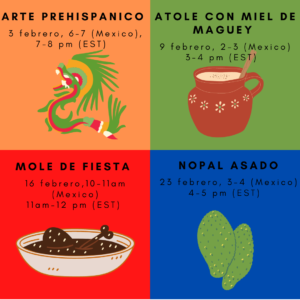
What had originally been planned as a 10 minute documentary linking my isotopic findings to community interests turned into deep reflection about what has been lost in the past 500 years. And yet, we also talked about the possibilities of reclaiming, reviving, and transforming the ways that we live in the present and look towards the future – the past as a reminder of alternative ways to live in the present.
Postscript:
Our forthcoming projects include a plan to create ethnographic story-maps of ingredients on the landscape, linking their deep histories to their uses in the present. The influence of my collaborators also helped shape my own Healing Garden project at Indiana University – a space dedicated to embodied pedagogy and deep reflection about our relationships to land.
At the time of publication, I plan to screen the completed documentary to my collaborators in December 2021, with a virtual screening in Spanish in January 2022 at the National Institute of History and Anthropology’s Diplomado de Antropologia e Historia de Tlaxcala, followed by a virtual screening in English in February 2022 (Fig. 13).